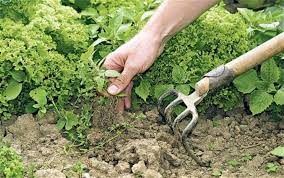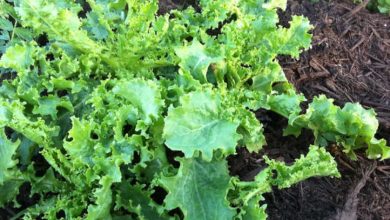Weeds: prevention and control methods in organic farming

Weeds can become a major problem in the garden… In an organic garden, where synthetic products or chemical herbicides, such as glyphosate, cannot be used, it is very necessary to put up adequate barriers to prevent weeds from appearing.If they appear, you have to combine several control methods to eliminate them, and never let your guard down.
The ecological methods that we will see below are not as aggressive as glyphosate and other herbicides, which can kill all the weeds in a single day (although with important negative consequences for the soil and for our health, of course…). As these ecological techniques are “softer”, they will have to be carried out more often and several different ones combined for more effective weed control.

First of all, prevention. We already talked about this in the post Control mmhh in the orchard. Prevention is better than cure, so I won’t dwell too much on the methods to prevent the appearance of weeds (you can see it in the link).
Today we will focus on some methods to eliminate weeds if we already have them in our orchard or organic farm. It is best to choose…
– Mechanical methods to eliminate weeds:
tillage
A primary tillage that inverts the structure of the soil helps to limit weeds because if there are seeds in the soil, it buries them deep and prevents them from being born. If weeds are already present, any type of tillage, even shallow weeding with a small hoe or other garden tool, will break the roots of the enemy plants, causing them to die.
Even if the orchard is not very large, the most effective physical method is to pull them out one by one, although this option is more laborious and can take more time.
Harvest
Mowing or clearing for weed control is used above all in organic meadows and pastures (where animals also help us to control them) or between woody crops. It is not used too much for herbaceous crops such as vegetables from the garden with short cycles, since the weeds would not stop competing at any time and we would have to be cutting them every two by three.
In addition to eliminating the plants that we do not want in the garden, these mechanical methods can also help us to fertilize the soil if after carrying them out the remains of weeds are buried. The remains of these plants will provide the soil with organic matter that will decompose and become nutrients for the plants (the same can be done with the residues of the previous crop).
– Thermal methods to eliminate weeds:
Fire
It consists of providing heat for a few seconds so that the weeds die by dehydration. It is usually done with torches. The drawback is that it is not always possible to do it due to the proximity of the crop.
solarization
This method is incompatible with crops, it must be done before sowing, with «bare» soil.
It consists of covering the soil, previously watered, with a 0.1 to 0.2 mm plastic sheet and leaving it for 30-40 days, coinciding with a period of high intensity of sun. The plastic makes a magnifying glass effect and high temperatures are reached in the soil (on the order of 60º) that kill unwanted weeds. As at 60º the seeds may not die, it is important that they are already germinated or quite «sensitive» (= humid) so that the heat can kill them, that is why prior irrigation is important.
This method is also used to disinfect the soil from diseases such as nematodes, we already talked about it in the post Solarization: an ecological technique. What is it and what is it for.
– Methods to limit light and prevent weeds from growing:
mulching
Light is one of the main conditioning factors for crops, without light they cannot grow. If we put a cover of stones, bark, newspaper or black plastic in the free space between our crops, the growth of weeds in that area will be limited.
But mulching also has other uses, more about this ecological technique in the post Padding or mulching for orchards.
– Biological methods to control weeds:
Green manures or live mulching
If the soil surface is occupied by a «green cover» it will be much harder for weeds to grow because they will have more competition.
In addition, if we cultivate living covers between our crops, they also help to fertilize the organic garden if they are later buried, as we saw in the post Green manure for the organic garden
Biological control with insects and microorganisms
Living organisms such as insects and fungi are used for the reduction of weed populations.
In India and Australia, for example, Dactylopius ceylonicus and Cacroblastis cactorum have been used to weaken the Opuntia or Prickly pear that grew among the crops… The problem is that this can backfire and become, as happened in some cases, in a serious pest problem in the plant that we wanted to eliminate but in areas where it was not a problem and we do want it to be present…
Another example of biological weed control is the use of microorganisms, such as fungi, that release mycotoxins and other phytotoxic substances (= toxic to plants), as reported in this article about research to create natural and ecological herbicides with beneficial fungi..
If you need more information about mmhh you can consult other posts by clicking on this link and your comments and advice to control weeds in an ecological way are always welcome. Cheers!

![Photo of Teucrium: [Cultivation, Irrigation, Associations, Pests and Diseases]](https://www.complete-gardening.com/wp-content/uploads/2022/08/teucrium-cultivation-irrigation-associations-pests-and-diseases-390x220.jpg)
![Photo of Pests and Diseases of Geraniums: [Detection, Causes and Solutions]](https://www.complete-gardening.com/wp-content/uploads/2022/08/pests-and-diseases-of-geraniums-detection-causes-and-solutions-390x220.jpg)

